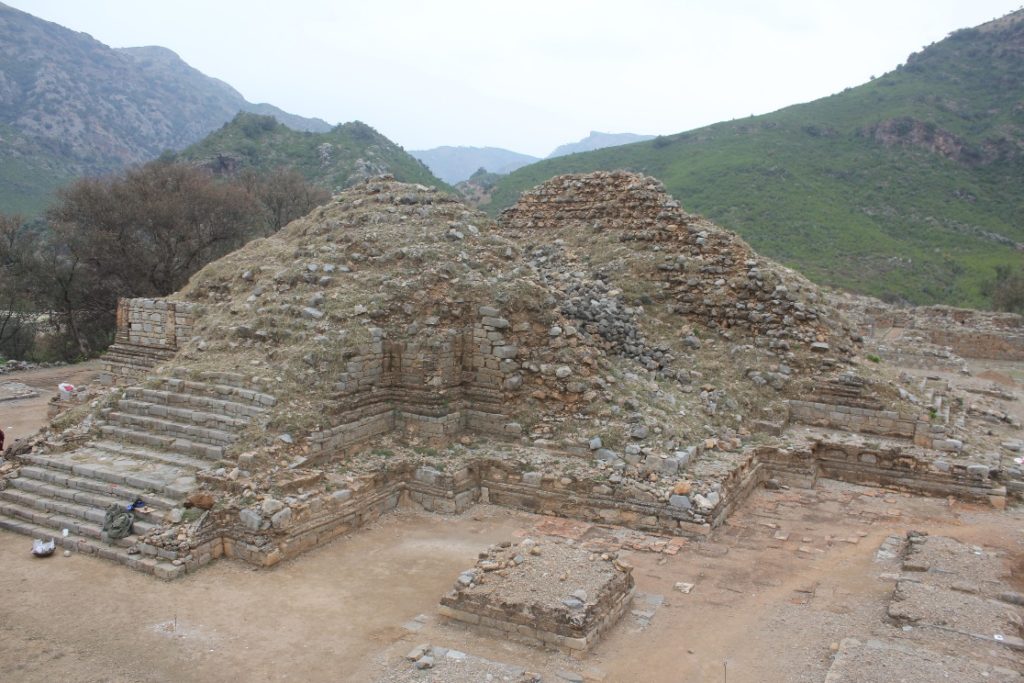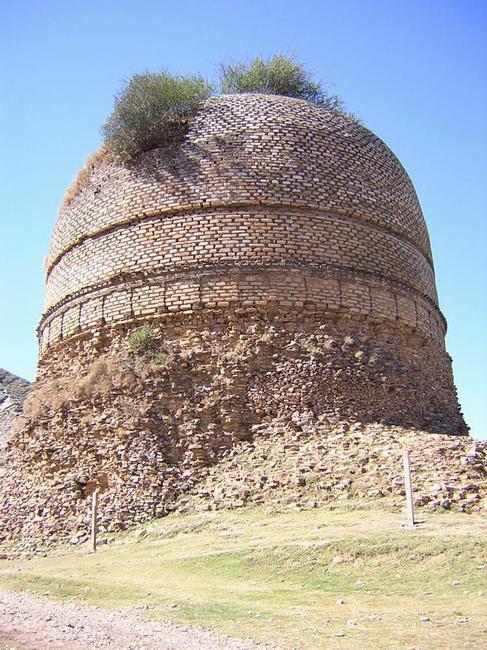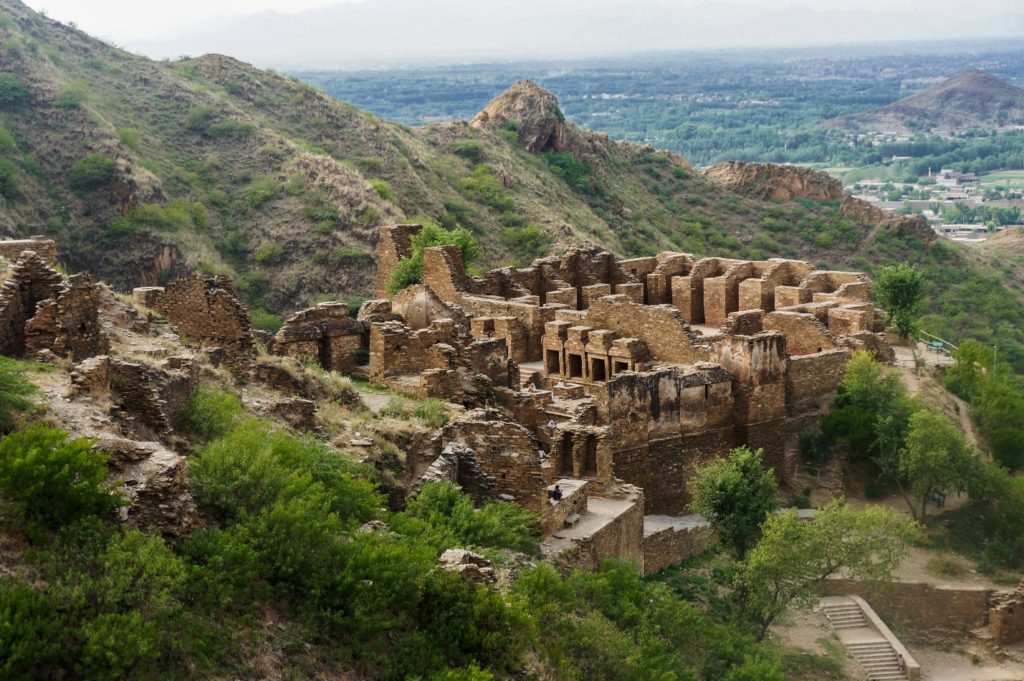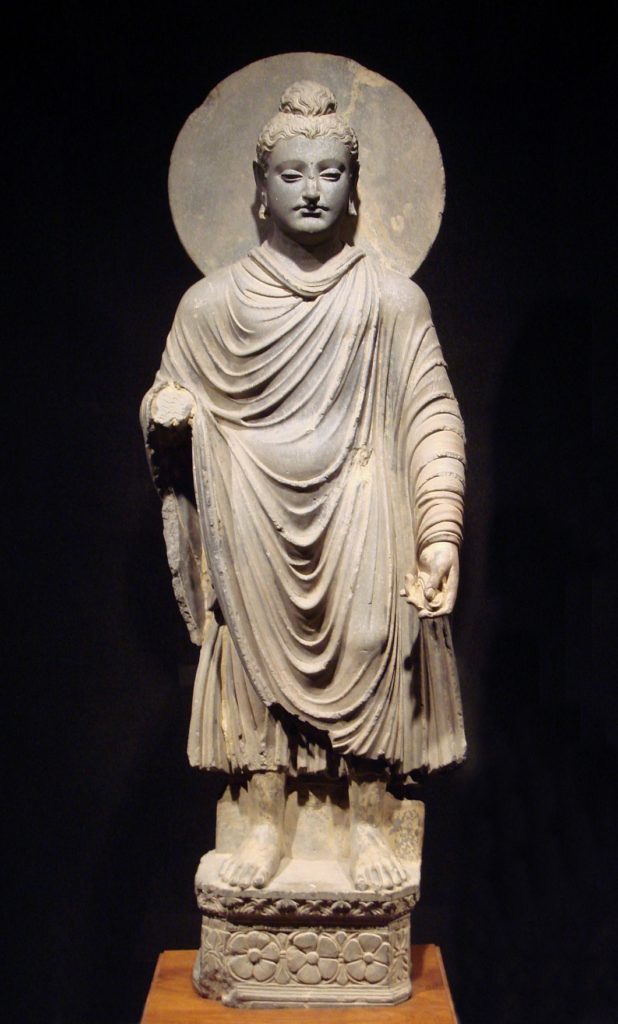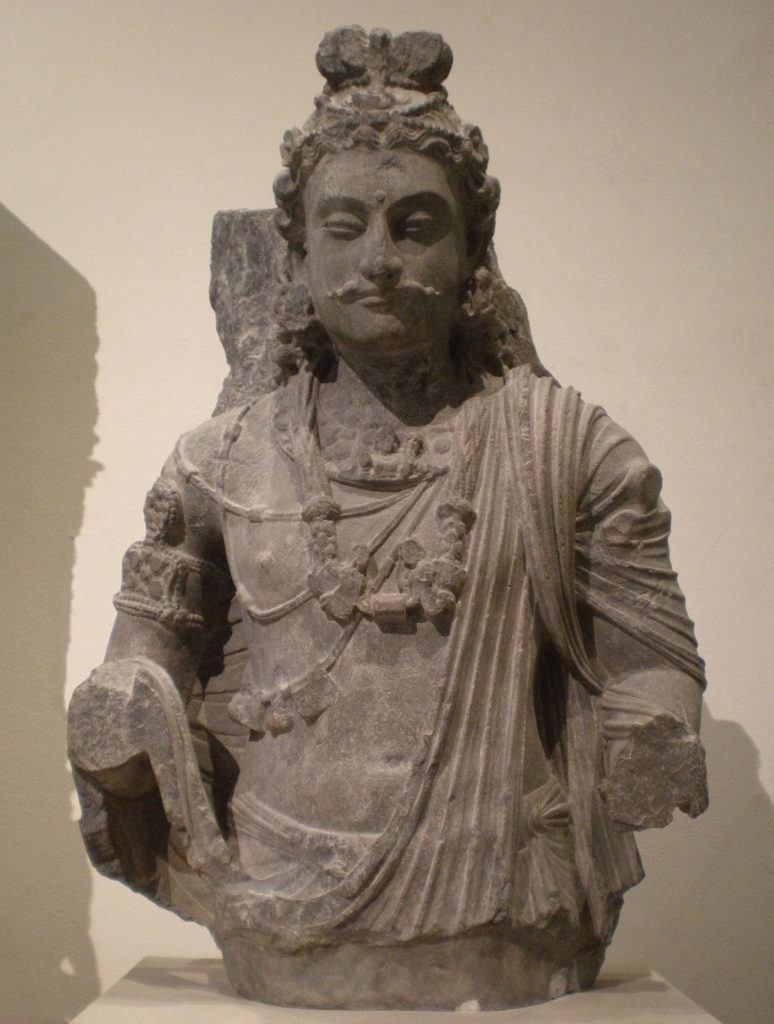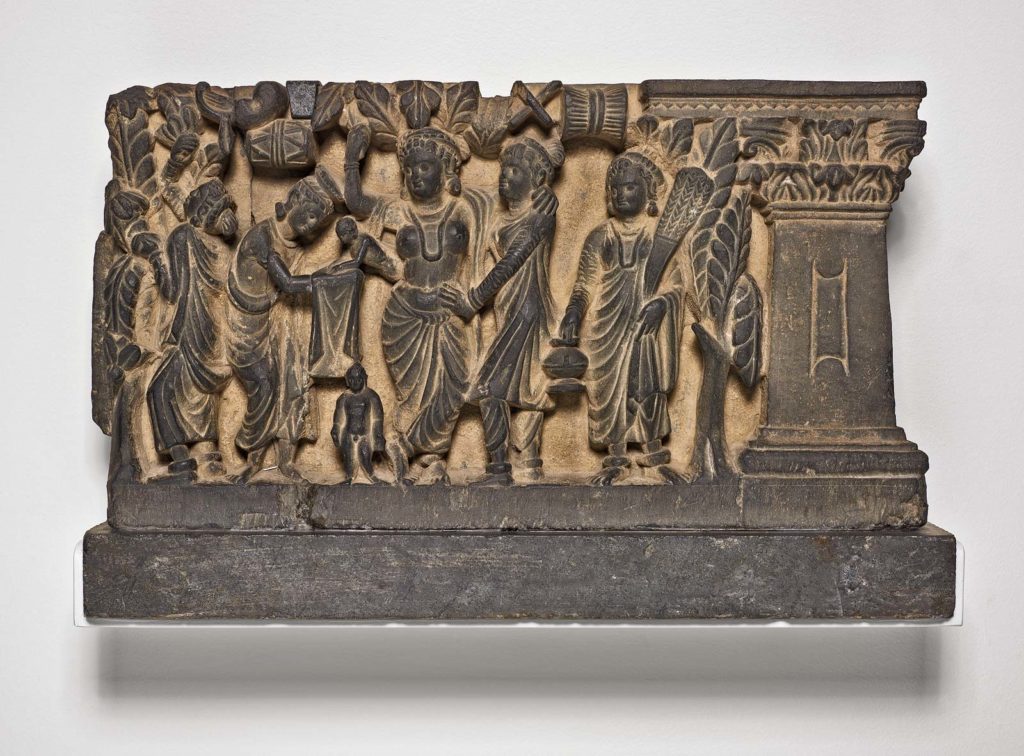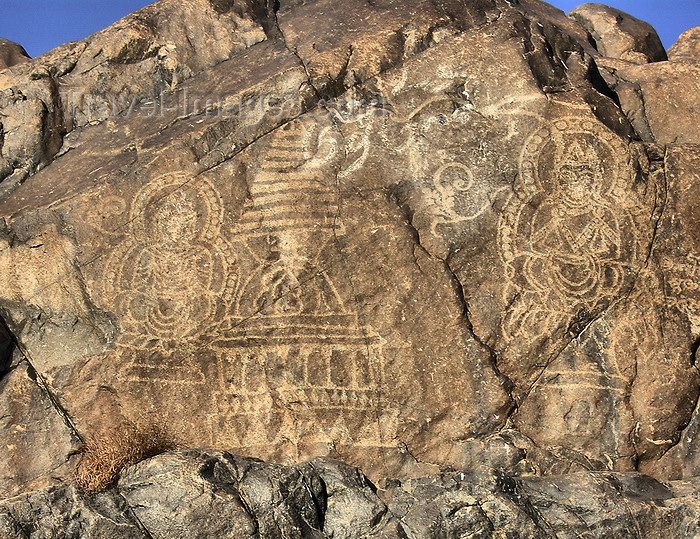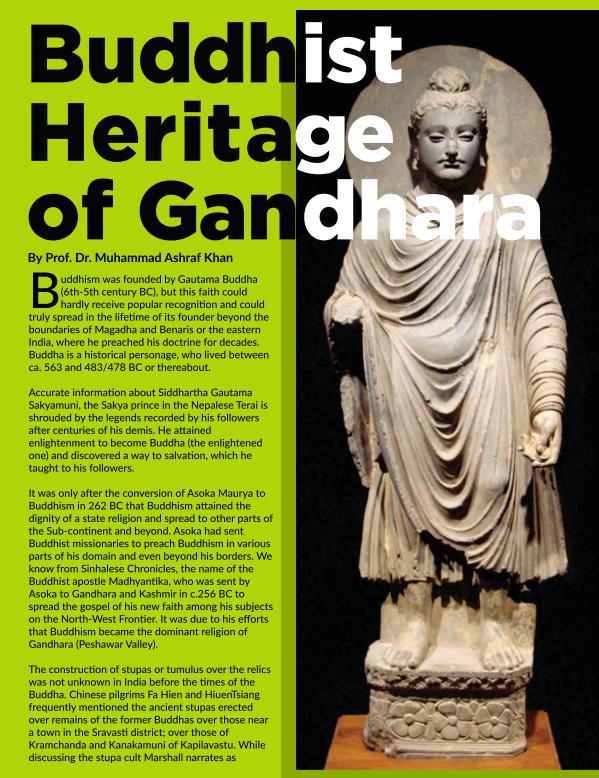
Buddhism was founded by Gautama Buddha (6th-5th century BC), but this faith could hardly receive popular recognition and could truly spread in the lifetime of its founder beyond the boundaries of Magadha and Benaris or the eastern India, where he preached his doctrine for decades. Buddha is a historical personage, who lived between ca. 563 and 483/478 BC or thereabout.
Dharmarajika Stupa, Taxila Valley
Accurate information about Siddhartha Gautama Sakyamuni, the Sakya prince in the Nepalese Terai is shrouded by the legends recorded by his followers after centuries of his demis. He attained enlightenment to become Buddha (the enlightened one) and discovered a way to salvation, which he taught to his followers.
Bhamala Stupa, Taxila Valley
It was only after the conversion of Asoka Maurya to Buddhism in 262 BC that Buddhism attained the dignity of a state religion and spread to other parts of the Sub-continent and beyond. Asoka had sent Buddhist missionaries to preach Buddhism in various parts of his domain and even beyond his borders. We know from Sinhalese Chronicles, the name of the Buddhist apostle Madhyantika, who was sent by Asoka to Gandhara and Kashmir in c.256 BC to spread the gospel of his new faith among his subjects on the North-West Frontier. It was due to his efforts that Buddhism became the dominant religion of Gandhara (Peshawar Valley).
Shingardar Stupa, Swat Valley
The construction of stupas or tumulus over the relics was not unknown in India before the times of the Buddha. Chinese pilgrims Fa Hien and HiuenTsiang frequently mentioned the ancient stupas erected over remains of the former Buddhas over those near a town in the Sravasti district; over those of Kramchanda and Kanakamuni of Kapilavastu. While discussing the stupa cult Marshall narrates as whatever the of these monuments which were seen by the Chinese pilgrims, the fact that they were said to be the graves of the former Buddhas indicates that the practice of raising such memorials over the dead was at least looked upon as an age-old custom. After the death of the Buddha, stupas were raised over his body-relics.
Takht-bahi Buddhist Monastery, Mardan
His body relics were distributed among the eight major tribes and enshrined at Rajagriha, Vaisali, Kapilavastu, Allakappa, Ramagrama, Vethadijoar Pava, and Kusinara, besides the shrines erected by Drona and the Mauryas. From these and other traditions it is abundantly clear that the erection of stupas must have been a familiar institution in India even in the time of the Buddha. But it is equally clear that among the Buddhists themselves the stupa did not become an object of marked veneration until the time of Asoka.
Representation of Buddha in Gandhara Art
Early Buddhist literature is replete with information about the buildings within the sangharama and furnishes the most meticulous details regarding the life of the brethren, but in none of the books which can be ascribed to a time anterior to Asoka is there a word about the building or cult of stupas. Such an omission would be unimaginable if these memorials had been venerated by the early Church, as they afterward came to be by the latter. No doubt the eight stupas in which the Buddha’s relics reposed were objects of reverence from the time of his death onwards, but there is nothing to show that the stupa was adopted as a recognized emblem of the Buddhist faith before the time of the Maurya emperor. It was Asoka who gave the first impetus to this remarkable cult by opening seven of the eight stupas referred to above, subdividing the relics of the Blessed One among all the principal towns of his realm and erecting a stupa of imposing dimensions over each portion. From the time of Asoka onward the cult of the relic-stupa rapidly developed, and that very soon the stupa itself, whether it contained any relics or not, came to be regarded as the most outstanding and ubiquitous emblem of Buddhism and worthy of worship for its own sake.
Representation of Bodhisatva Maitriya in Gandhara Art
Thus, before the beginning of the Christian era, the stupa had become the nucleus of every sangharama in the land and was looked upon as the outward and visible manifestation of the Faith. Archaeological excavations in the Gandhara region and particularly in Taxil valley exposed many Buddhist shrines belonging to the 3rd century BC and 5th century AD. Among them, the earliest one is the Dharmarajika stupa erected by Asoka the Great in the 3rd century BC.
Birth scene of the Sidharta Gautma Buddha
The art of Gandhara is primarily religious and was employed already in the services of the Buddhist faith. The Buddhist art of Gandhara did not remain confined to its geographical boundary but spread rapidly with the passage of time to the areas in the north of Swat and even beyond Indus to the Taxila valley. This fact is elaborately supported by the discovery of many Buddhist sites in these regions where a large number of sculpture scenes of Buddhist mythology have been discovered during excavations. The Buddhist art of Gandhara which flourished here from the 1st to 8th century AD was originated in this area and was first recognized in the remains of shrines and monasteries. It is also called Greco-Buddhist or Romano-Buddhist art because it contains some elements which are certainly of western origin.
Buddha Carving, Jehanabad Buddha, Swat Valley
The art of Gandhara is called Hellenistic as it was inherited from the Greek and Indo-Greek Kingdom which then flourished in Bactria, Afghanistan, and part of northern Pakistan during the 3rd-2nd century BC. The term Romano-Buddhist refers to the western influence as depicted in the architectural composition of the sculptures showing the artistic tradition of the Mediterranean empire dating to the 1st century AD. However, it may be remarked that the western artistic influence in the sculptures of Swat and Gandhara promoted the concept of the Buddhist religion, as is predominantly manifested by them.
Buddhist Rock Carvings, Northern Areas, Pakistan
This strongly supports the theory of continuity, as in the sculpture, there is a visible blending of western and eastern ideas. The Buddhist art widely spread to foreign countries and is found in Afghanistan in the areas bordering the former Soviet Union and beyond the Indus in the Taxila valley. The major sites in Peshawar valley, Swat, Malakand, Dir, Buner, Bajaur, Hazara, and Taxila have yielded thousands of sculptures from the religious establishments lying around them. Most of the sculptures uncovered from the various sites in the Gandhara area are worked in stone, stucco and terra-cotta, metal, and paintings. Many of these are in black, soft blue, grey, and greenschist stone quarried from the hills of Swat, Dir, and Buner, sandstone and Kanjure stone(a type of pours limestone) sculptures are also found in the Taxila Valley. These sculptures made in different types, depict various Jataka stories and scenes from Buddhist mythology such as the birth of Buddha, his childhood, the renunciation, the departure from his palace, the enlightenment, attainment of Buddha-hood under the Bodhi Tree, the first sermon in the Deer Park, and the various events of his life leading to his death (Parinirvana), the division of his ashes and their burial in stupas at various places. The art saw several periods in its evolution, each period adding new features to the common art trend of Gandhara.

The writer is chairman, Department of Archaeology, University of the Punjab, Lohore. Pakistan.


